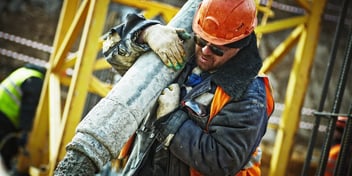Unlock the potential of your construction site by exploring the critical role Powered Industrial Trucks play in boosting both efficiency and safety on the job. These powerful machines are essential for moving materials and keeping operations running smoothly—when used properly, they can prevent accidents and improve productivity across your entire team.
What is a Powered Industrial Truck?
A Powered Industrial Trucks, commonly known as a forklift, lift truck, or pallet jack, is a motorized vehicle used to lift, carry, and transport materials. These trucks are essential in various industries, including construction, manufacturing, and warehousing, where they enhance the efficiency of material handling operations.
Powered industrial trucks come in various forms, each designed for specific tasks and environments. They are equipped with different attachments to handle a wide range of loads, making them versatile tools in any construction project.
Types of Powered Industrial Trucks in Construction
In the construction industry, several types of Powered Industrial Trucks are commonly used:
1. Counterbalance Forklifts: These are the most common type, featuring forks at the front and a counterweight at the back to balance heavy loads.
2. Reach Trucks: Designed for narrow aisles, these trucks have extended reach capabilities, making them ideal for high racks.
3. Rough Terrain Forklifts: Built for outdoor use, these trucks have large, rugged tires to navigate uneven and rough surfaces.
4. Pallet Jacks: Used for moving palletized loads, these trucks can be manual or powered and are perfect for short-distance transport.
Key Features and Functions of Powered Industrial Trucks
Powered industrial trucks are equipped with several key features that enhance their functionality and safety:
1. Lifting Mechanisms: Depending on the type, these trucks can lift loads to varying heights using forks, platforms, or specialized attachments.
2. Power Sources: They can be powered by electricity, gasoline, diesel, or propane, each with its own advantages depending on the application.
3. Control Systems: Modern trucks come with advanced control systems, including ergonomic designs, intuitive controls, and safety features like automatic braking and stability controls.
Safety Regulations and Best Practices
To ensure the safe operation of powered industrial trucks, several regulations and best practices must be followed:
1.Operator Training: Only trained and certified operators should be allowed to operate these vehicles. Training should cover both the practical and theoretical aspects of truck operation, including ergonomic training for safe material handling.
2. Regular Maintenance: Routine inspections and maintenance are crucial to keep the trucks in safe working condition. This includes checking brakes, tires, steering, and hydraulic systems.
3.Safe Operating Procedures: Operators should adhere to safe operating procedures, including wearing seat belts, keeping loads balanced, and avoiding overloading or abrupt maneuvers. For comprehensive safety guidelines, refer to our practical safety tips for material handling.
The Role of Powered Industrial Trucks in Enhancing Efficiency
Powered industrial trucks play a critical role in enhancing the efficiency of construction projects. They streamline the process of moving materials, reducing the time and labor required for manual handling.
By utilizing these trucks, construction sites can improve productivity, minimize downtime, and ensure that materials are delivered to the right place at the right time. This not only speeds up project timelines but also contributes to a safer and more organized work environment.






Leave a Comment